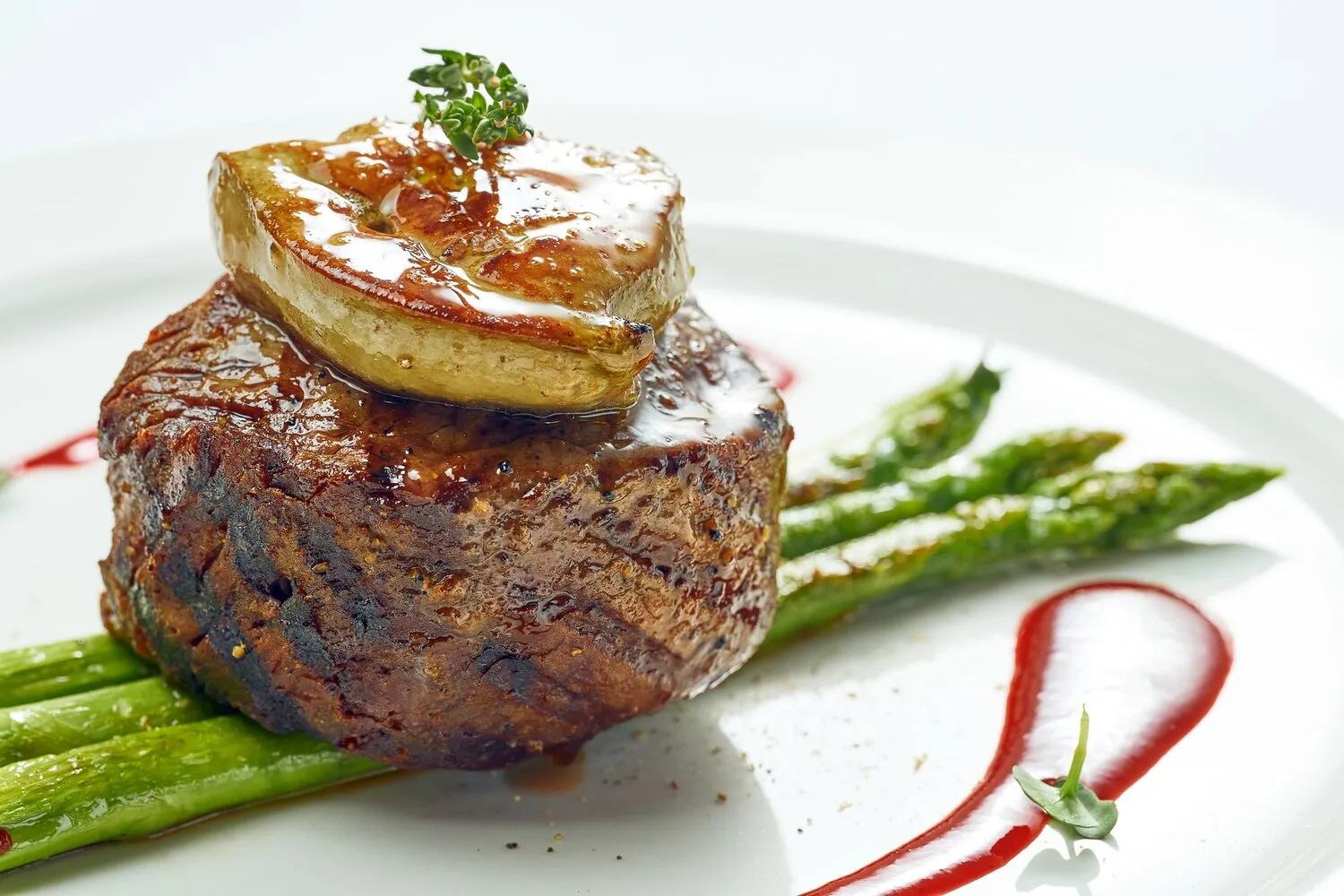
Dry-Aged Steaks
Echo & Rig often features dry-aged steaks. The specific cut will vary, but this is a highlight for steak lovers.
Nutrition Facts
* The % Daily Value (DV) tells you how much a nutrient in a serving of food contributes to a daily diet. 2,000 calories a day is used for general nutrition advice.
Dry-aging, while conceptually dating back centuries in meat preservation, gained prominence in the United States' steakhouses during the mid-20th century. This process was initially driven by the desire to enhance the flavor and tenderness of beef. Modern refrigeration techniques allowed for more controlled aging, resulting in the premium product we know today.
Dry-aged steak is often associated with fine dining and special occasions. It represents a commitment to quality and a celebration of craftsmanship in meat preparation. Steakhouses often feature dry-aged steaks as a premium offering.
Steakhouse Culture
Dry-aged steaks are a staple of American steakhouse culture, representing a high-end culinary experience. The presentation and preparation are often emphasized, highlighting the quality of the meat.
Celebration & Luxury
Enjoying a dry-aged steak is often reserved for celebratory meals or when seeking a luxurious dining experience. It's seen as a treat and a sign of indulgence.
Dry-aged steak offers a complex flavor profile, characterized by intense beefy notes, savory umami, and sometimes subtle hints of blue cheese or nuts. The aging process concentrates the natural flavors while tenderizing the meat.
The primary flavor driver is the concentration of beef flavors due to moisture loss during aging. Enzymes break down proteins and fats, creating amino acids and fatty acids, which contribute to umami and savory notes. The subtle blue cheese or nutty flavors are the result of naturally occurring molds and bacteria that develop on the surface of the meat during aging, although these are typically trimmed before cooking.
Sear Powerfully
Achieve a deep, flavorful crust by searing the steak at high heat using a cast-iron skillet or grill. This creates a Maillard reaction, enhancing the savory flavors.
Season Simply
Dry-aged steak has intense flavor already. Simple seasoning with salt and pepper is often sufficient to highlight the meat's natural qualities. Avoid overpowering the flavor with complex marinades or rubs.
Rest is Key
Allow the steak to rest for at least 10 minutes after cooking. This allows the juices to redistribute, resulting in a more tender and flavorful final product. Tent it loosely with foil.
Explore additional Steakhouse dishes and restaurants
Explore SteakhouseDiscover top dining spots and culinary experiences in Sacramento.
Explore SacramentoLearn more about the food culture, restaurant scene, and culinary heritage of United States.
Explore United States